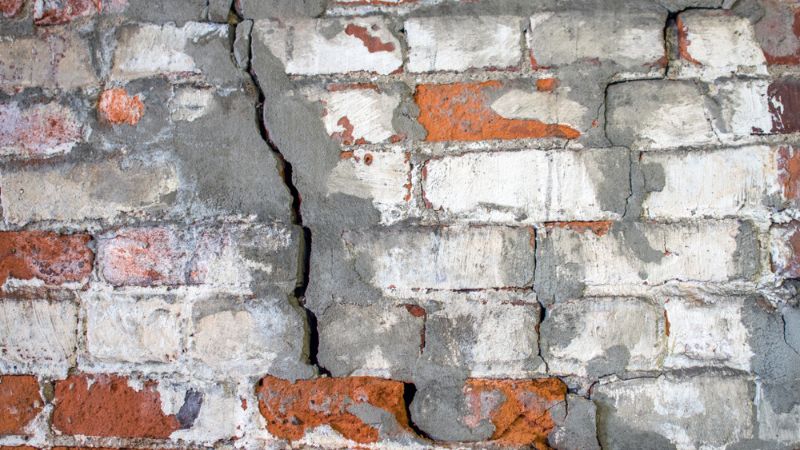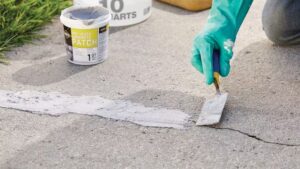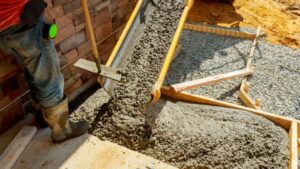Your home’s foundation is the most critical structural component, and early detection of issues can save you from costly repairs. Over time, concrete foundations can develop cracks, unevenness, or other signs of wear that compromise the stability of your home. Knowing the top warning signs of concrete foundation damage is essential for protecting your property.
In this blog, we’ll walk you through the ten most common indicators that your foundation may need repair. From cracked walls and sagging floors to doors that won’t close properly, these issues can be the first signs of trouble. Taking quick action to fix them can help save more serious harm and preserve the value of your house.
Top 10 Concrete Foundation Repair Warning Signs
Cracks in Walls and Floors
One of the most obvious indicators of foundation problems is cracks in your walls or floors. These cracks can appear in several forms, such as vertical, horizontal, or diagonal. While small hairline cracks are normal as a house settles, larger or expanding cracks indicate potential foundation damage. Vertical cracks often signify the natural settling of a house, but horizontal or diagonal cracks can point to structural problems.
Horizontal cracks, in particular, may indicate that the foundation is under significant pressure from soil expansion or other external factors. If you notice cracks wider than 1/8 inch, or those that seem to grow over time, it’s essential to get your foundation inspected by a professional. Ignoring these signs can lead to more severe damage, like water intrusion, which can further compromise the foundation’s integrity.
Also Read:- How To Repair Cracks in a Concrete Driveway
Uneven or Sagging Floors
Uneven or sagging floors can signal that the foundation beneath your home is shifting or sinking. When your foundation moves, it creates an imbalance in the structural support, causing your floors to warp or dip in certain areas. This could be due to soil erosion, moisture damage, or poor initial construction. One way to detect this problem is to place a marble on the floor and see if it rolls without being pushed.
If it does, your foundation may be uneven. Additionally, you may notice gaps between the floor and baseboards or doors that scrape the floor when opened. Not only may sagging floors ruin the look of your house, but they can also be dangerous. Over time, the sagging can worsen, making it difficult to open doors or walk across certain areas. A foundation inspection is necessary to diagnose the problem and provide the best course of action for repair.
Sticking or Misaligned Doors and Windows
If you notice that your doors or windows no longer open and close smoothly, this could be another red flag for foundation problems. Foundation shifts can cause your home’s framing to become uneven, resulting in misaligned doors and windows. You might notice gaps at the top or bottom of the frames, or that doors and windows stick when you try to open or close them. Over time, this issue can worsen, making it impossible to lock doors or properly seal windows.
In addition to letting drafts and moisture into your house, misaligned doors and windows can also result in energy waste and possibly even water damage. While sticking doors and windows could be caused by humidity or other minor issues, persistent problems are often a sign of more serious foundation movement that should be addressed immediately.
Gaps Around Windows and Doors
In addition to doors and windows sticking, you may also notice visible gaps around their frames. This happens when the foundation shifts, pulling the walls apart from the windows or doors, leaving unsightly and potentially hazardous gaps. These gaps not only affect the appearance of your home but can also compromise its insulation.
Cold air, moisture, and pests can easily enter through these openings, increasing your utility bills and potentially leading to further damage. Sealing these gaps may offer a temporary fix, but it’s crucial to address the root cause, which is often foundation movement. A thorough foundation inspection will reveal whether your home needs structural repairs to prevent further shifting and widening of these gaps.
Cracks in the Foundation Itself
One of the most obvious signs of foundation issues is cracks in the foundation itself. These can appear as small hairline fractures or large, deep fissures. While minor cracks may be due to normal settling, larger cracks that extend across the foundation could indicate significant structural problems. These cracks can form due to soil shifting, improper drainage, or extreme weather conditions.
Over time, they can widen and deepen, allowing water to seep into the foundation and weaken it further. Ignoring cracks in the foundation can lead to severe structural damage, requiring costly repairs or even foundation replacement. It is crucial to have a professional evaluate the extent of any foundation cracks and identify the required repairs if you find any.
Bowing Basement Walls
Bowing or leaning basement walls are a serious sign of foundation issues that should not be ignored. When external pressure, such as expanding soil, exerts too much force on the foundation walls, they can begin to bow inward. This is a clear indication that the foundation is struggling to hold up under pressure, and it may only be a matter of time before more significant damage occurs.
You might also notice horizontal cracks accompanying the bowing, which suggests that the walls are close to failing. If ignored, buckling walls can cause the basement walls to completely collapse, endangering the structural integrity of your house. A foundation repair expert can assess the situation and recommend reinforcement solutions, such as wall anchors or braces, to stabilize the foundation.
Water Leaks in the Basement
Water leaks in the basement are a clear indication that your foundation may be compromised. A solid foundation should keep moisture out, but cracks or shifts in the structure can allow water to seep through. You may notice damp spots on the walls, puddles on the floor, or mold growth, all of which point to water infiltration. Water damage not only weakens the foundation but can also lead to health hazards, such as mold and mildew.
Over time, constant exposure to moisture can cause the concrete to deteriorate, further weakening the foundation. If you spot any signs of water leaks in your basement, it’s crucial to address them immediately. A foundation inspection can help identify where the water is coming from and what repairs are needed to prevent further damage.
Separation of Walls from the House
When your home’s foundation shifts, it can cause the walls to pull away from the rest of the structure. This separation is often visible between exterior walls and the roofline or between walls and the floor. You might notice gaps or spaces where the walls should be flush with other parts of the home. This type of movement can severely weaken the structural integrity of your house, making it more susceptible to further damage from storms, earthquakes, or other external forces.
If left unchecked, the walls could collapse or cause additional damage to the rest of the home. This kind of issue requires immediate attention from a foundation repair specialist to stabilize the structure and prevent further separation.
Chimney Tilting or Cracking
A tilting or cracking chimney is another warning sign of foundation trouble. The chimney may tilt or break as a result of settlement or shifting because it is often attached to the foundation. In some cases, the entire structure may begin to pull away from the house. This is not just a cosmetic issue; a leaning chimney poses a significant safety risk, as it could collapse if the foundation damage worsens.
Additionally, cracks in the chimney can allow moisture to enter, leading to further deterioration and the possibility of costly repairs. If you notice any movement or damage to your chimney, it’s essential to have both the chimney and foundation inspected to determine the underlying cause and the best course of action.
Also Read:- Tips For Effective Concrete Maintenance
Frequent Plumbing Issues
Frequent plumbing issues, such as leaks, can be a sign that your foundation is shifting or settling. When the foundation moves, it can cause pipes to crack, break, or become misaligned. You may experience recurring leaks, slow drains, or even water damage in areas of your home. In severe cases, the foundation movement can cause underground pipes to burst, leading to costly repairs and significant water damage.
If you find yourself dealing with repeated plumbing issues, it’s worth investigating whether foundation problems are to blame. A professional foundation inspection can determine if the plumbing problems are related to foundation movement and recommend appropriate repairs to prevent future issues.
Conclusion
Spotting the warning signs of foundation issues early on can prevent extensive damage and costly repairs. If you notice any of these top 10 concrete foundation repair warning signs, it’s essential to consult a professional for a thorough inspection. A proactive approach will not only safeguard your home’s structure but also save you from major headaches down the road.
FAQs
What are the common signs of foundation issues?
Cracks in walls, uneven floors, sticking doors or windows, and gaps around windows are some common signs of foundation problems.
How often should I inspect my foundation for damage?
It’s recommended to inspect your foundation at least once a year or after significant weather events, like heavy rain or earthquakes.




